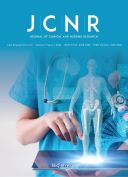Abstract
As a “non-curable” disease, Alzheimer’s disease (AD) is the most common neurodegenerative disease in the aged population. Physical and mental pain exerts on every AD patient and their families. Even though there is no worldwide approved treatment against AD now, researchers have never given up on investigating and exploring potential approaches for curing AD. Gene therapy and drug treatment arise for alleviating AD symptoms. This paper illustrates the pathological mechanism of AD and focuses on the role of autophagy in AD pathology. Autophagy is a self-degrading mechanism to clear out dysfunctional cells; abnormal autophagy can directly trigger AD. This paper summarizes the effective and novel therapeutic approaches to treating AD by promoting autophagy activity, as well as AD diagnosis and assessment from early to severe stage, which provides promising approaches for researchers who are interested in AD treatments and feasible directions for science translational medicine.
References
Bhushan I, Kour M, Kour G, et al., 2018, Alzheimer’s Disease: Causes & Treatment – A Review. Ann Biotechnol, 1(1): 1002.
Li Q, Liu Y, Sun M, 2017, Autophagy and Alzheimer’s Disease. Cellular and Molecular Neurobiology, 37(3): 377–388.
Katzman R, 1986, Alzheimer’s Disease. The New England Journal of Medicine, 314: 964–973.
Davis-Ajami ML, Lu ZK, Wu J, 2022, Exploring the Home Healthcare Workforce in Alzheimer’s Disease and Related Dementias: Utilization and Cost Outcomes in US Community Dwelling Older Adults. Archives of Gerontology and Geriatrics, 98: 104536.
Citron M, 2010, Alzheimer’s Disease: Strategies for Disease Modification. Nature Reviews Drug Discovery, 9(5): 387–398.
Cummings BJ, Head E, Afagh AJ, et al., 1996, ?-amyloid Accumulation Correlates with Cognitive Dysfunction in the Aged Canine. Neurobiology of Learning and Memory, 66(1): 11–23.
Nixon RA, 2007, Autophagy, Amyloidogenesis and Alzheimer Disease. Journal of Cell Science, 120(23): 4081–4091.
Uddin MS, Stachowiak A, Mamun AA, et al., 2018, Autophagy and Alzheimer’s Disease: From Molecular Mechanisms to Therapeutic Implications. Frontiers in Aging Neuroscience, 10: 4.
Lee JA, Beigneux A, Ahmad ST, et al., 2007, ESCRT-III Dysfunction Causes Autophagosome Accumulation and Neurodegeneration. Current Biology, 17(18): 1561–1567.
Nilsson P, Loganathan K, Sekiguchi M, et al., 2013, A ? Secretion and Plaque Formation Depend on Autophagy. Cell Reports, 5(1): 61–69.
Ohsumi Y, 2014, Historical Landmarks of Autophagy Research. Cell Research, 24(1): 9–23.
Saido T, Leissring MA, 2012, Proteolytic Degradation of Amyloid ?-Protein. Cold Spring Harbor Perspectives in Medicine, 2(6): 6379.
Hampel H, Hardy J, Blennow K, et al., 2021, The Amyloid-? Pathway in Alzheimer’s Disease. Molecular Psychiatry, 26(10): 5481–5503.
Sun YX, Ji X, Mao X, et al., 2014, Differential Activation of mTOR Complex 1 Signaling in Human Brain with Mild to severe Alzheimer’s Disease. Journal of Alzheimer’s Disease, 38(2): 437–444.
Caccamo A, De Pinto V, Messina A, et al., 2014, Genetic Reduction of Mammalian Target of Rapamycin Ameliorates Alzheimer’s Disease-Like Cognitive and Pathological Deficits by Restoring Hippocampal Gene Expression Signature. Journal of Neuroscience, 34(23): 7988–7998.
François A, Rioux Bilan A, Quellard N, et al. 2014, Longitudinal Follow-Up of Autophagy and Inflammation in Brain of APPswePS1dE9 Transgenic Mice. Journal of Neuroinflammation, 11(1): 1–14.
Liu J, Li L, 2019, Targeting Autophagy for the Treatment of Alzheimer’s Disease: Challenges and Opportunities. Frontiers in Molecular Neuroscience, 12: 203.
Majumder S, Richardson A, Strong R, et al., 2011, Inducing Autophagy by Rapamycin Before, but not After, the Formation of Plaques and Tangles Ameliorates Cognitive Deficits. PloS One, 6(9): 25416.
Rocchi A, Yamamoto S, Ting T, et al., 2017, A BECN1 Mutation Mediates Hyperactive Autophagic Sequestration of Amyloid Oligomers and Improved Cognition in Alzheimer’s Disease. PLoS Genetics, 13(8): 1006962.
Cai CZ, Zhuang XX, Zhu Q, et al., 2022, Enhancing Autophagy Maturation with CCZ1-MON1A Complex Alleviates Neuropathology and Memory Defects in Alzheimer Disease Models. Theranostics, 12(4): 1738.
Hyttinen JM, Niittykoski M, Salminen A, et al., 2013, Maturation of Autophagosomes and Endosomes: a Key Role for Rab7. Biochimica et Biophysica Acta (BBA)-Molecular Cell Research, 1833(3): 503–510.
Qin C, Lu Y, Wang K, et al., 2020, Transplantation of Bone Marrow Mesenchymal Stem Cells Improves Cognitive Deficits and Alleviates Neuropathology in Animal Models of Alzheimer’s Disease: A Meta-Analytic Review on Potential Mechanisms. Translational Neurodegeneration, 9(1): 1–20.
Qin C, Bai L, Li Y, et al., 2022, The Functional Mechanism of Bone Marrow-Derived Mesenchymal Stem Cells in the Treatment of Animal Models with Alzheimer’s Disease: Crosstalk Between Autophagy and Apoptosis. Stem Cell Research & Therapy, 13(1): 90.
Yang C, Su C, Iyaswamy A, et al., 2022, Celastrol Enhances Transcription Factor EB (TFEB)-Mediated Autophagy and Mitigates Tau Pathology: Implications for Alzheimer’s Disease Therapy. Acta Pharmaceutica Sinica B, 12(4): 1707–1722.
Feldman H, and Woodward M, 2005, The Staging and Assessment of Moderate to Severe Alzheimer Disease. Neurology, 65(6 suppl 3): 10-17.
Saxton J, McGonigle-Gibson KL, Swihart AA, et al., 1990, Assessment of the Severely Impaired Patient: Description and Validation of a New Neuropsychological Test Battery. Psychological Assessment: A Journal of Consulting and Clinical Psychology, 2(3): 298.
Ferm L, 1974, Behavioural Activities in Demented Geriatric Patients. Gerontologia Clinica, 16(4): 185–194.
